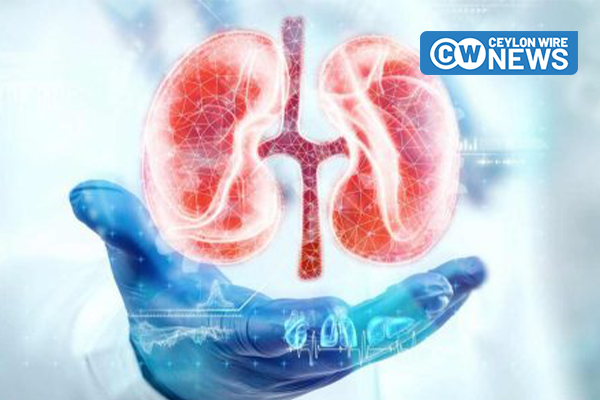Nephrologist Sanjaya Heiyanthuduwa, the Chief Patron of All-Island Kidney Patients’ Association, has highlighted that approximately 10% of Sri Lanka’s population is grappling with Chronic Kidney Disease (CKD). Dr. Heiyanthuduwa emphasized that the surge in diabetes cases among the populace stands as the primary contributor to the escalating numbers of kidney patients.
“Diabetes emerges as the predominant factor fueling kidney damage in Sri Lanka. Enhanced diabetes management is imperative to deter kidney diseases among these patients,” he articulated.
“Moreover, strict adherence to medical counsel and regular clinic visits are paramount. Curbing the consumption of excessive salt, sugar, and oil in diets is crucial. An individual in good health should ideally intake around three and a half liters of water per day to mitigate the risk of this disease,” Dr. Heiyanthuduwa added.
According to data from the National Kidney Foundation in the United States, CKD affects 10% of the global population, ranking as the 12th most prevalent cause of mortality. Annually, millions succumb due to inadequate access to affordable treatment.
Furthermore, as per an analysis conducted by the Global Burden of Disease Study in 2019, CKD has witnessed a 40% surge over the past three decades, emerging as one of the fastest-growing major causes of death. Common precursors to CKD encompass diabetes and hypertension, conditions increasingly rampant among urbanizing populations.
However, rural Sri Lanka grapples with a relatively recent phenomenon: “chronic kidney disease of unknown etiology (CKDu).” Despite numerous scientific research endeavors, no definitive cause has been pinpointed for the acute kidney damage or failure afflicting as much as 22.9% of residents in several “hotspot” areas in the north-central districts of Polonnaruwa and Anuradhapura, alongside neighboring districts, as reported recently on Al Jazeera.
On a national scale, Nishad Jayasundara, an environmental toxicologist at Duke University in Durham, North Carolina, USA, hailing from a farming community in Sri Lanka, asserts that 10 to 15% of Sri Lankans suffer from kidney ailments. Jayasundara particularly delves into researching the origins of CKDu.
“[The disease] disproportionately affects farming communities,” Jayasundara elucidates. “Current estimates suggest that over 20,000 individuals [in Sri Lanka] face end-stage kidney failure with limited treatment options, while 6 to 10% of the population in impacted regions are diagnosed with CDKu.”
Lack of Early Symptoms
While CKD manifests identifiable symptoms such as weight loss, poor appetite, swollen limbs, shortness of breath, and itchy skin, CKDu remains asymptomatic until its advanced stages, making early detection nearly unattainable, assert doctors. By the time a diagnosis is made, the disease typically becomes untreatable.
Even upon symptom onset, commonly including back pain, limb swelling, and general body aches, which are not unusual for individuals accustomed to strenuous manual labor like farmers and fishermen, detection remains challenging.
Dr. S. B. A. M. Mujahith, a nephrologist at Batticaloa Teaching Hospital on Sri Lanka’s eastern coast, emphasizes the geographical linkage of CKDu to certain regions, particularly the eastern and north-central provinces. He underscores the need for further investigation and cause identification.
A World Health Organization (WHO) team conducted an inquiry into the causes of CKDu in the 2010s, albeit inconclusively.
Mujahith favors the term “chronic interstitial nephritis in agricultural communities” (CINAC), highlighting the disease’s specificity to the nation’s agricultural workforce, primarily affecting men. Mujahith elucidates that most patients inhabit impoverished agricultural communities and may encounter toxic agrochemicals through occupational exposure, inhalation, and ingestion of contaminated water and food.
Amidst Sri Lanka’s ongoing economic crisis, exacerbated by the fifth year of its worst economic downturn, access to medication and sustenance has been severely curtailed, impeding disease treatment and management, especially in remote and underserved locales like Ambagaswewa.









